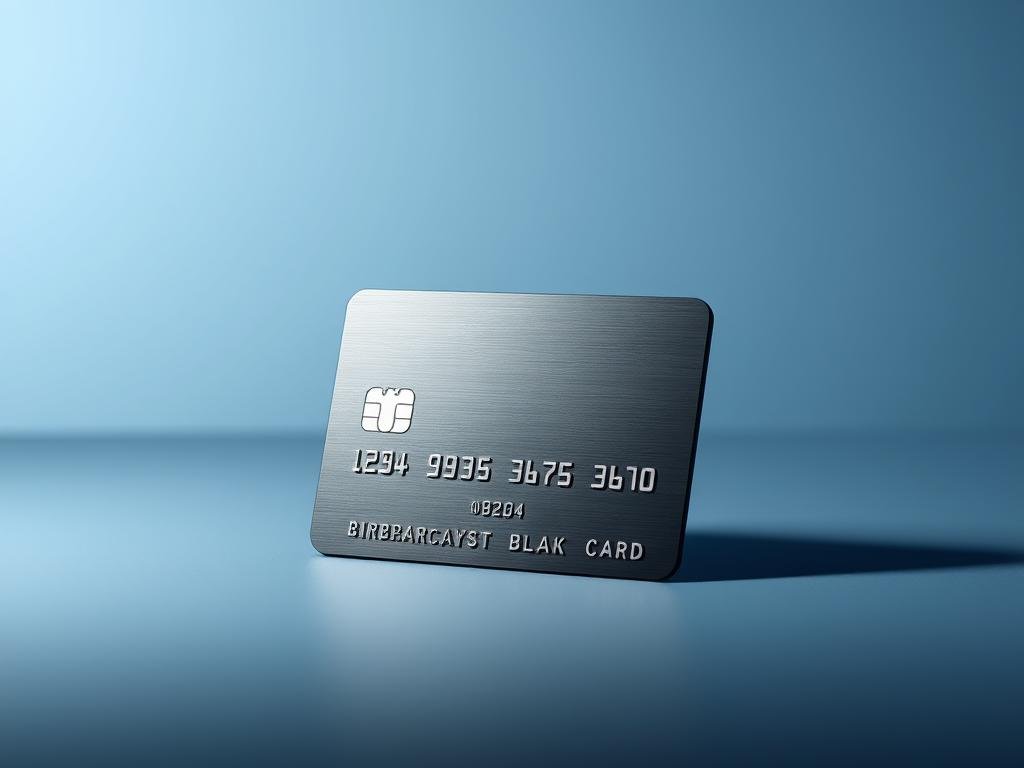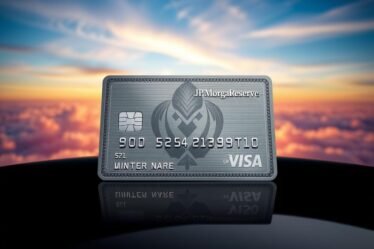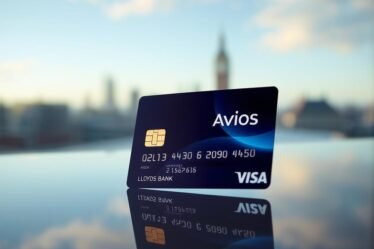Your guide to this luxury card starts here. You’ll get a clear look at how the black card blends a coated metal design with practical value for travel and daily use.
Expect plain language about benefits like concierge support, priority access, and flexible redemption paths. The overview avoids jargon so you can judge fit fast.
The Luxury Card products are issued by Barclays Bank Delaware under license from Mastercard. BLACK CARD is a registered trademark used under license. Offers are subject to credit approval and specific terms.
You’ll learn where this card sits among high-end options, how points and cash options compare, and how travel protections can help offset the annual fee. The piece also points you to official information and terms so you can confirm current details before you apply.
Key Takeaways
- The coated metal card signals premium status while delivering practical access benefits.
- Concierge services streamline bookings and save you planning time.
- Compare points versus cash options to maximize value for your goals.
- Travel protections and perks can help justify the annual fee with smart use.
- Check official terms and offers before you submit a credit application.
Quick Verdict: Is the Mastercard Black Card Worth It for You Right Now?
The bottom line: the Mastercard Black Card can make sense if you use concierge service, travel protections, and flexible redemptions enough to justify the $699 annual fee.
Consider your upcoming year. If you have planned trips, frequent concierge needs, or expect high-value travel redemptions — including scenarios that approach the 1.5 value — this card’s service and metal feel can deliver clear value.
- Approval depends on credit; check the offer details and the card’s terms and conditions before applying.
- Authorized users cost $249 each; add them only if shared access meaningfully increases benefit.
- The intro balance transfer window can help with planned debt moves, but it won’t apply to purchases; review current rates and repayment plans.
If you rarely travel or prefer simple category bonuses over concierge-level support, a lower-fee option may give better net value cash or points over a year. Map your next 3–6 months, estimate likely redemptions, and compare them to the fee to reach a clear verdict.
barclays-black-card-priority-rewards Explained
Priority handling gives you faster answers and bookings when time matters most. This benefit moves routine travel, dining, and event requests ahead of standard queues so you grab options before they sell out.
What “priority rewards” mean in daily use
You’ll see quicker turnaround on common tasks: flight searches, dinner reservations, and hard-to-get tickets. The service can tailor suggestions to your budget and preferences.
Use the concierge like a personal planner. Give clear parameters—dates, cabin class, hotel brands, neighborhoods—and the team returns bookable choices you can approve.
How priority rewards integrate with concierge requests
The card concierge can combine reward balances and booking options to find better redemption value. That makes sense when you want to use points for travel or choose cash-like redemption instead.
- Faster access during peak travel and sold-out dates.
- Aligned bookings based on your stated preferences.
- Batch requests (itinerary, dining, activities) save time and increase success.
Conditions and limitations apply; please refer to the Reward Rules in the Terms and Conditions for program details. Message/data rates may apply when using mobile channels to contact services.
Card Overview: Luxury Card Black Card Features at a Glance
This overview highlights the Black Card’s build, brand stance, and the network benefits that shape its value.
Design and feel: You’ll carry a coated metal card that feels substantial in hand. The coated metal finish and black-on-black styling keep the look discreet while signaling premium status.
Durable and refined, the metal construction suits frequent travelers and daily users. It stands apart from typical plastic cards and reinforces the luxury card image.
Network and practical advantages
As part of the World Elite Mastercard network, you gain wide acceptance and select network perks that complement issuer services.
- Global use: Mastercard acceptance matters when you book abroad, rent cars, or dine overseas.
- Service mix: Concierge, travel protections, and flexible redemptions round out the package beyond just looks.
- Value context: The build and positioning aim to justify an elevated fee when you use the benefits often.
Luxury Card products are issued by Barclays Bank Delaware. Mastercard, World Elite Mastercard, and the circles design are owned by Mastercard International Incorporated. BLACK CARD is a registered trademark used under license.
Pricing Snapshot: Annual Fee, Authorized Users, and Key Rates
Start with the numbers: the ongoing charges and key rates shape this card’s value proposition.
$699 annual fee and $249 authorized user cost
You’ll pay a $699 annual fee. Adding someone costs 249 authorized user per person. Only add an authorized user if they will use the travel and concierge features enough to justify the extra cost.
Intro balance transfer: 0% APR for 15 billing cycles (within 45 days)
If you move balances within 45 days of account open, you get 0% APR on qualifying transfers for the first 15 billing cycles. This intro offer does not apply to purchases or cash advances.
Variable APRs, fees, and 0% foreign transaction fee
After the intro period, variable APRs for purchases and balance transfers depend on your credit, application review, and the Prime Rate. The cash advance APR is 29.99% with a 5% fee (min. $10). Each balance transfer has a 5% fee (min. $5).
- Minimum monthly interest charge: $0.50.
- Foreign transaction fee: 0% — helpful for international use.
- Check the Terms and Conditions for current rates and eligibility rules.
“Review the terms conditions carefully so intro timing and fees don’t surprise you.”
Weigh the $699 annual fee against perks and zero foreign transaction costs. If you compare to a lower-fee, $200 annual alternative, make sure expected value exceeds the added costs before you apply for the mastercard black card.
Rewards Structure: Earning and Your Options for Cash or Points
Understand how the card’s earn structure turns everyday spending into flexible value you can use as points or statement credits.
How you earn rewards on purchases
You earn points on routine purchases with a simple, predictable rate. This keeps tracking straightforward for the busy user.
- Everyday earning: points accrue on most purchases so you steadily build balances.
- Consistent value: categories are simple to understand, reducing surprises at redemption.
- Household planning: align primary and additional user spend to consolidate points.
Cash back vs. points: choosing the right path
Choose points when you plan travel in the next 3–6 months; pairing points with concierge help can lift redemption value.
If you prefer flexibility, pick cash-like redemptions to offset purchases quickly. Watch for enhanced channels that can increase effective value cash back or deliver near 1.5 value on travel redemptions.
Conditions and limitations apply to the rewards program; see Reward Rules in the Terms and Conditions for complete details.
Redemption Value: Getting Up to 1.5 Value on Cash Back
Targeted redemptions are the practical path to squeezing up to a 1.5 value from your points and cash options. You must follow the program’s specified paths and thresholds to access the top tiers.

When the 1.5 value applies and how to access it
How it works: the best rates show up on select booking channels and qualifying redemption types. Follow the program rules and hold for threshold bonuses to reach the higher cents-per-point.
Practical examples: airfare, hotel, and statement credit use
Airfare often yields the highest uplift. Run the math—compare ticket cash price versus points plus fees before you book.
Hotels can be compelling when cash rates spike or when flexible cancellation matters.
Statement credits are simpler. If you don’t travel, cash-like redemptions can deliver predictable credit to your account.
Maximizing value cash back vs. travel redemptions
- Plan redemptions to hit value thresholds rather than spending points on small items.
- Use a hybrid approach: cash back for routine spend, points for select airline and hotel bookings.
- Track redemptions and net cost in a simple spreadsheet to refine your strategy.
Conditions and limitations apply to redemptions; see Reward Rules within the Terms and Conditions for complete program details.
Luxury Card Concierge: What You Can Ask For and Expect
Think of the luxury card concierge as a personal assistant for travel, dining, and hard-to-find experiences. You give the parameters and the team returns actionable options you can approve.
Travel requests can be end-to-end: research, flight options, hotel shortlists, and curated itineraries aligned to your preferences. For multi-city or group trips, bundle details in one thread so everything syncs.
For dining and lifestyle, the card concierge sources prime-time reservations, chef’s counter seats, tickets, gifts, and local experiences. Provide budget, neighborhoods, brands, and loyalty notes up front to speed results.
Response times, channels, and escalation
Expect responsive communication across phone, email, or app. When timing matters, mark the request urgent and set clear deadlines.
- Sanity-check complex redemptions before you book to compare value and fees.
- If inventory closes, escalate with context — priority access helps but partners decide availability.
- Keep preferences updated so repeat requests get faster and more accurate.
Upon account approval, full coverage details, time limits, and eligibility are in your Guide to Benefits. Message/data rates may apply for mobile communications.
Travel Perks and Protections That Enhance Value
Travel protections and on-property hotel perks can deliver clear value when you use them on real trips. You’ll see benefits that matter during a three-night stay and when flights change or trip plans shift.
Hotel program benefits and the “average value” note
You can tap hotel benefits that often include daily breakfast for two, welcome amenities, potential room upgrades, and flexible check-in/out when available.
Average value is based on a 2025 three-night stay and may include upgrades, resort or dining credits, and complimentary Wi‑Fi. Actual value varies by property, room rate, upgrade availability, length of stay, and benefit use.
Airfare, lounge access, and 0% foreign transaction fee
For airfare, compare fares and fare classes before redeeming; better cabin products or flexible tickets may justify a higher redemption.
Zero foreign transaction fee pairs well with global Mastercard acceptance, making the card practical for international itineraries. Lounge access options vary by program and location; confirm entry rules before you fly.
Guide to Benefits: what’s included and where to find details
Consider airline booking protections and trip interruption benefits detailed in your Guide to Benefits; they can materially reduce travel risk.
Upon approval, a Guide to Benefits provides full coverage explanations including limits, eligibility, and documentation requirements.
- Use the concierge to stitch hotels, ground transfers, and dining so your experiences align on the ground.
- Add priorities like late check-out for business trips; the concierge can request and follow up.
- Bring the physical metal card as a backup internationally if mobile wallets fail.
- Review your Guide to Benefits before major trips so you know what’s covered and how to file claims.
Credits and Offers: Stretching the $699 Annual Fee
Small, targeted credits can chip away at the $699 annual fee and change the card’s net value for your wallet.
Look for statement credits and limited-time offers that match how you already spend. When enrolled, these credits reduce your effective cost and can push the card closer to break-even.
Potential statement credits and limited-time offers
Monitor merchant promos and issuer offers. Stacking targeted deals with base earn rates can boost your value per dollar.
- Use statement credits for travel or daily expenses when possible to offset the annual fee.
- Enroll quickly in time-limited offers and track expiration dates in your calendar.
- Keep receipts and screenshots so you can confirm terms if a merchant or rate changes.
Global Entry and travel program tie-ins to watch
If the card includes a Global Entry credit, plan enrollment or renewal around the benefit. That single credit can justify part of the annual fee and speed your international arrivals.
Conditions and limitations apply to program benefits and promotional offers; see the Terms and Conditions and your Guide to Benefits upon approval. Message/data rates may apply for mobile usage.
Authorized Users: When Adding a $249 Authorized User Makes Sense
Adding someone to your account can turn into a time-saver — if they actually use the perks. Before you add a secondary card, run a quick checklist of planned trips, likely concierge requests, and whether the incremental cost fits your budget.
Sharing luxury card travel benefits and concierge access
Each authorized user costs $249. That fee sits on top of your annual fee, so treat the decision like a mini subscription.
Only add a user when they’ll reliably use travel protections, card concierge help, and on-trip services enough to cover the cost.
- Add an authorized user when they’ll use travel perks, protections, and concierge support enough to justify the $249 cost.
- Share your preferences and concierge threads so the additional user can request similar standards for hotels, flights, and dining.
- Confirm which benefits extend to authorized users and whether any enrollments or activations are required for them to access protections.
- If a partner or family member travels independently, the incremental fee can pay for itself through protections and time saved using the concierge.
- Coordinate spend to consolidate points into one account to reach meaningful redemption thresholds faster.
Consider timing: add the user before major trips so they get access from day one. Reassess annually and remove the authorized user before the next billing cycle if usage drops.
Conditions and limitations apply; review your Guide to Benefits to confirm which protections and concierge features extend to an authorized user.
Terms, Conditions, and Eligibility You Should Review First
Start by checking the program’s eligibility and the single-bonus rule to confirm you qualify for the advertised offer. The offer is subject to credit approval and may be available only via this advertisement. Any bonus for this promotion is typically earned once per person or household.
Offer eligibility, single-bonus rule, and gaming warnings
You may be ineligible if you currently have or previously had an account in this program. The issuer can deny a bonus for prior accounts or suspected gaming.
Gaming or abusive activity — like multiple applications or abnormal transaction patterns — can lead to restrictions or bonus forfeiture.
Balance transfer and cash advance fee structures
Balance transfers charge a 5% fee (min. $5). Cash advances cost 5% (min. $10) and carry higher APRs.
Use the intro 0% APR window only with a clear payoff plan. After the intro, variable APRs change with the Prime Rate; check current rate details in the terms conditions.
Where to verify current Terms and Conditions
Read the full Terms and Conditions and the Guide to Benefits after approval. They list limits, exclusions, documentation rules, and which protections extend to an authorized user.
- Save a copy of current terms and information for quick reference.
- Confirm whether adding a 249 authorized user makes financial sense before you add them.
- Set reminders for enrollment deadlines tied to credits or protections.
“Review the Terms and Conditions and Guide to Benefits to understand coverage and eligibility before relying on protections.”
How It Compares: Luxury Card Black Card vs. Other Metal Cards
Compare the coated metal finish, concierge model, and redemption clarity when you choose a premium card. These three factors tend to shape day-to-day value more than a single headline perk.
Design, service model, and redemption value differences
The Black Card leans into a quiet, coated metal aesthetic. If you prefer understated metal design over flashy logos, this luxury card hits that note.
Service matters. The offering focuses on an elevated card concierge and white-glove support rather than airline tie-ins or expansive lounge networks.
Redemption mechanics are simple and aim for flexible cash-like paths and useful points options. That can beat more complex transfer programs if you want predictable value for airfare hotel bookings.
- Design: coated metal card and subtle black finish for quiet luxury.
- Service: concierge-forward model saves time on trip planning.
- Redemptions: simpler points-to-cash paths may suit frequent travelers who prefer clarity over complexity.
Mastercard and World Elite Mastercard are owned by Mastercard International Incorporated; Luxury Card trademarks are property of Barclays Lifestyles LLC and used under license.
Conclusion
Match your travel calendar and spending habits to the card’s concierge, protections, and redemption options before applying.
If you plan to use concierge help, airfare bookings, and the flexible cash back or points paths, the mastercard black card can deliver repeatable value that offsets a $699 annual fee.
Weigh the extra costs — including a 249 authorized user fee — against credits, the 0% foreign transaction fee, and any Global Entry credit timing. Remember the 0% intro APR on balance transfers made within 45 days for 15 billing cycles and review the terms in your Guide to Benefits.
If you want hands-off planning and travel-first perks, this luxury card is compelling. If low fees and simple earning matter more, consider alternatives with a $200 annual or lower fee instead.


